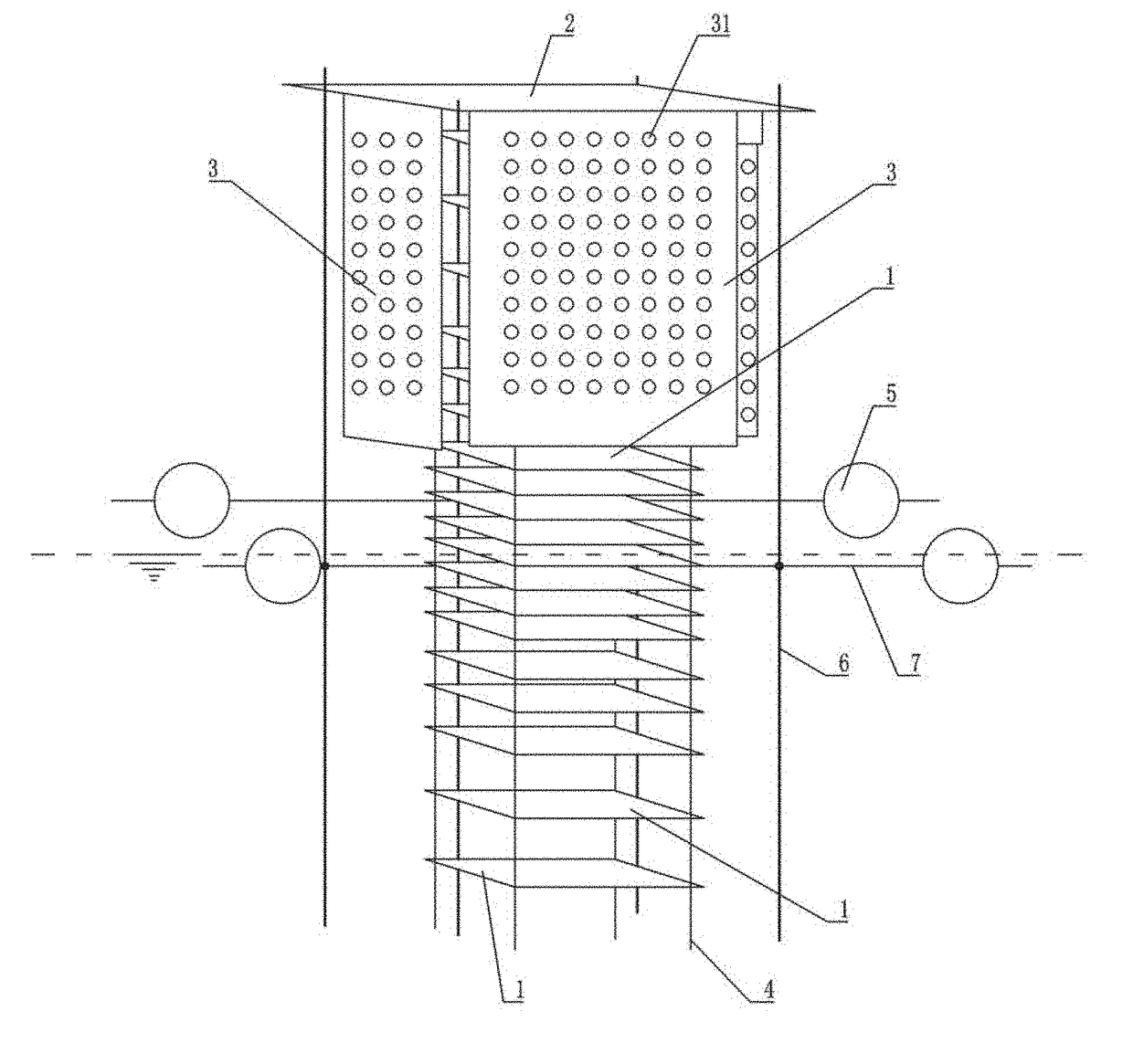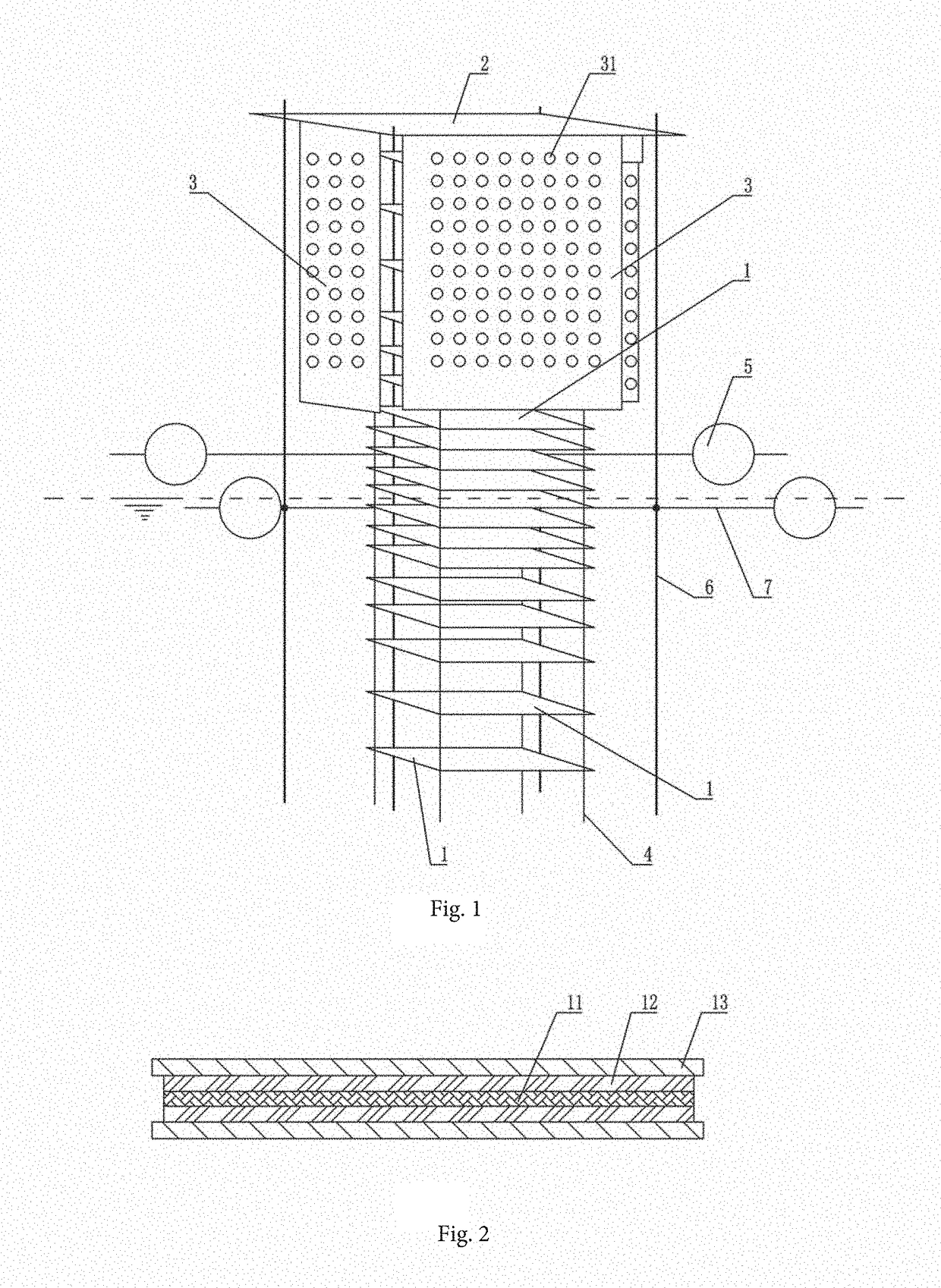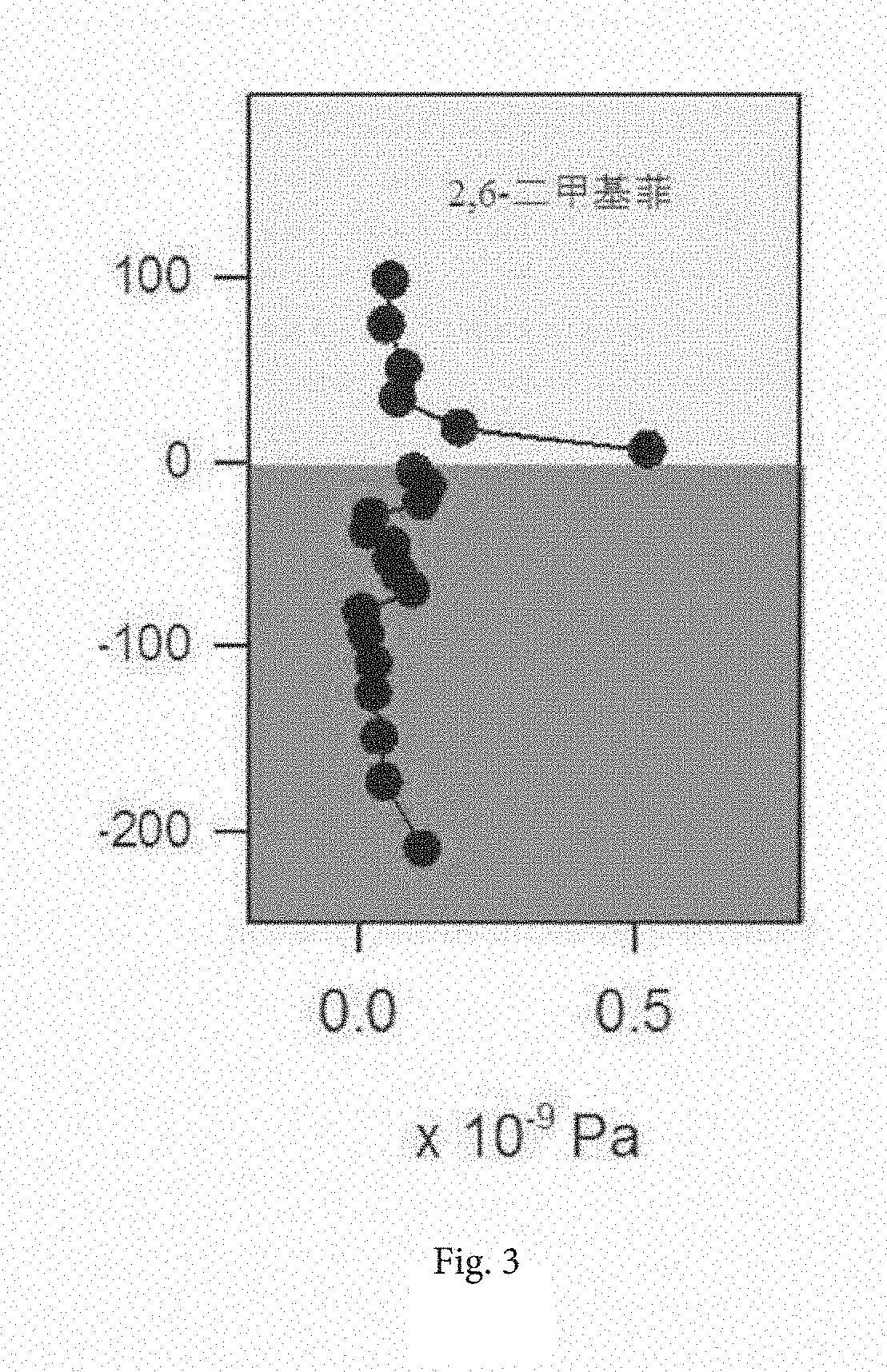Air-water interface flux detection method
- Summary
- Abstract
- Description
- Claims
- Application Information
AI Technical Summary
Benefits of technology
Problems solved by technology
Method used
Image
Examples
Embodiment Construction
[0021]A method for detection of air-water interface flux employs a principle of passively and continuously collecting contaminants at consecutive points close to a sea surface microlayer, acquiring the freely dissolved concentration at the consecutive points of the air and water body close to a water body surface microlayer and obtaining the air-water interface flux of the contaminant through fitting. The consecutive points above refer to a plurality of sampling points in the air along a height direction and a plurality of sampling points in the water body along a depth direction.
[0022]In one embodiment, a passive sampling device is used while implementing the detection method. As shown in FIG. 1, the passive sampling device includes a body, wherein the body is composed of sampling units 1, buoyancy units, a waterproof shading unit and a supporting unit.
[0023]Wherein, a plurality of sampling units 1 are provided, and the plurality of sampling units 1 are arranged along a vertical di...
PUM
 Login to View More
Login to View More Abstract
Description
Claims
Application Information
 Login to View More
Login to View More - R&D
- Intellectual Property
- Life Sciences
- Materials
- Tech Scout
- Unparalleled Data Quality
- Higher Quality Content
- 60% Fewer Hallucinations
Browse by: Latest US Patents, China's latest patents, Technical Efficacy Thesaurus, Application Domain, Technology Topic, Popular Technical Reports.
© 2025 PatSnap. All rights reserved.Legal|Privacy policy|Modern Slavery Act Transparency Statement|Sitemap|About US| Contact US: help@patsnap.com



